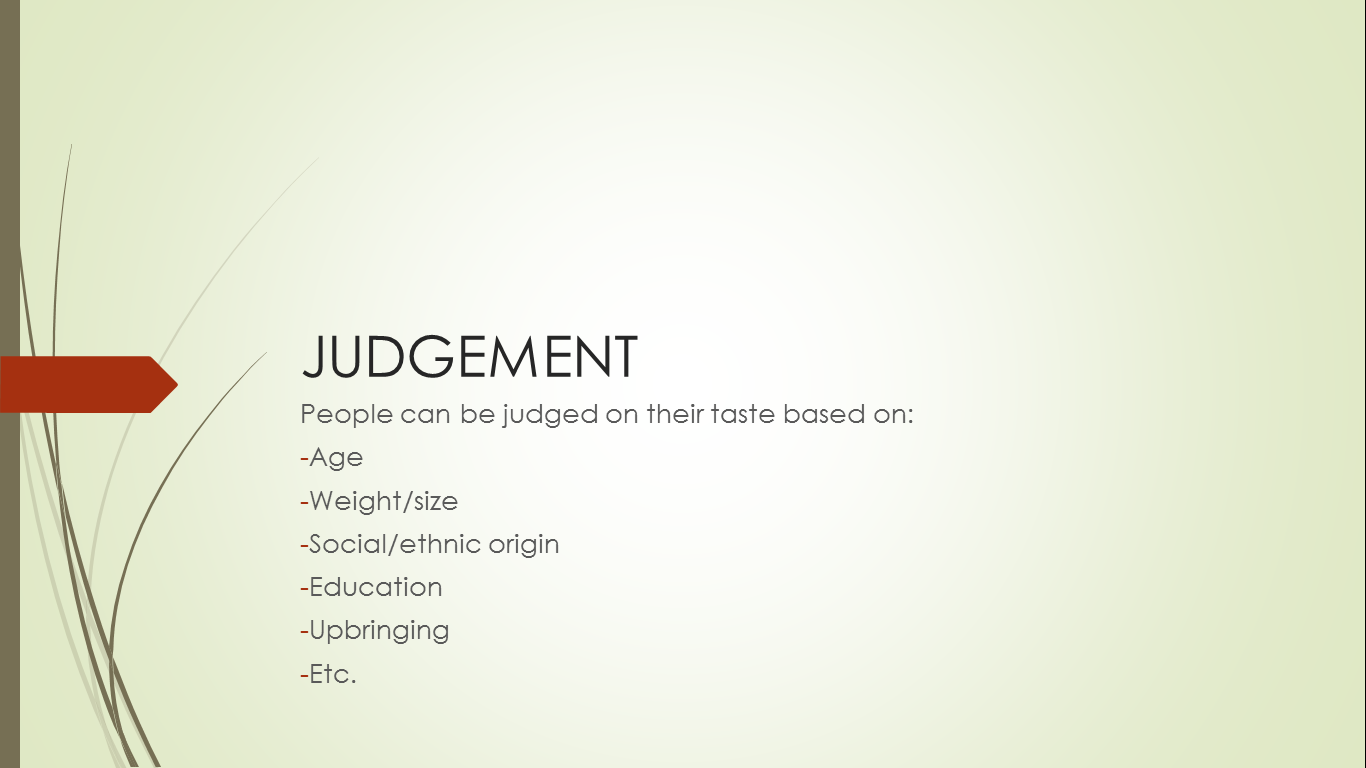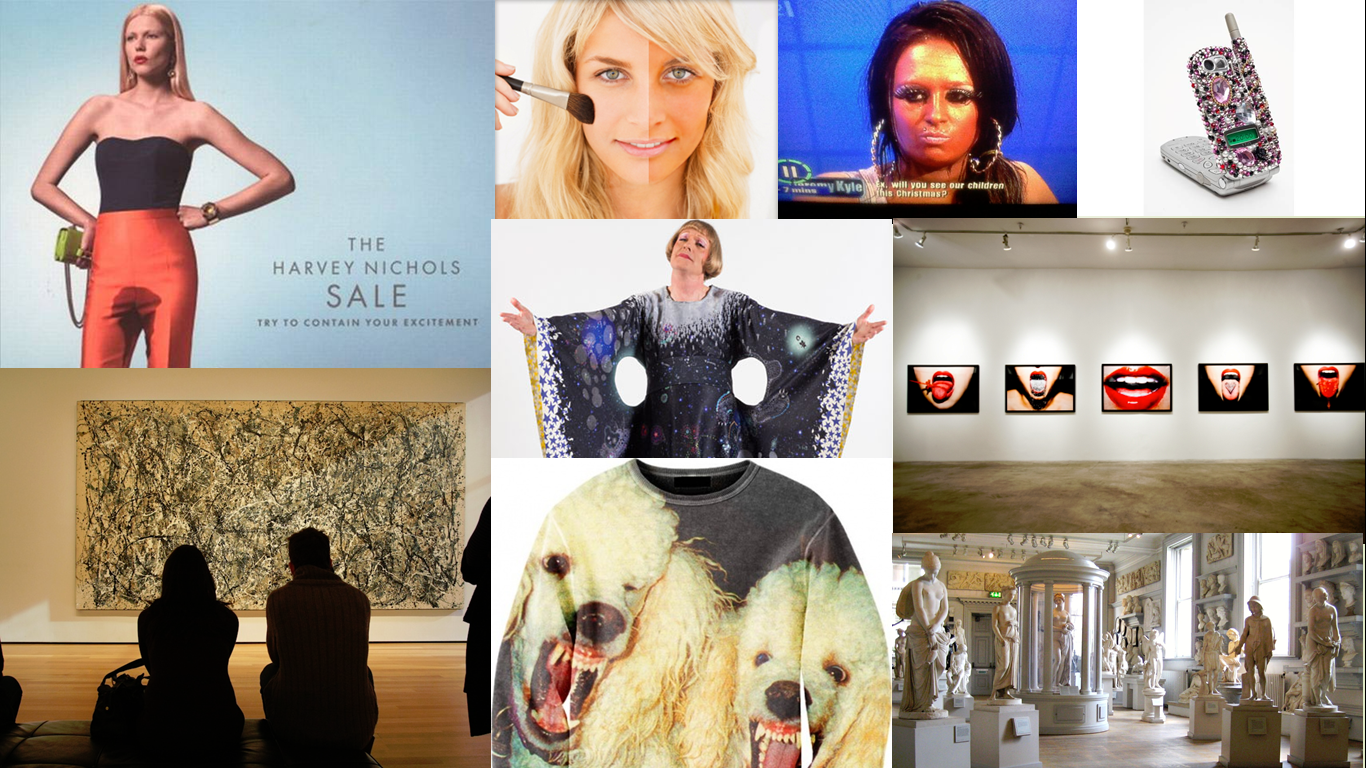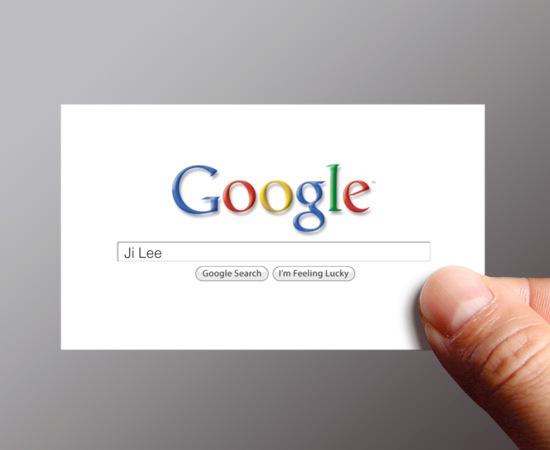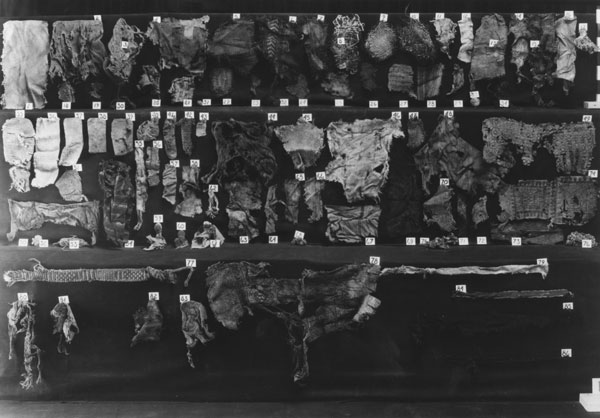We chose to work on 'taste', because it was a subject we all found interesting and had formed our own opinions about it.
Here are the slides along with our notes;
•Aspects of taste can be universal but also individual. Patterns of choice are influenced by cultural habits as well as personal preferences.
We must remember that taste is always changing. This can be based on the fact our mind sets are constantly evolving, as well as our day to day surroundings that influence our taste to like and dislike something are continually developing – taste is internal and external
•Social groups develop their own ideas of taste, therefore creating their own style and taste
•Everyone has their own opinion of taste. Socially it refers to a person’s choice/preference and is usually affected by personal experience and cultural influence.
•But it can be affected by others :-
-People with ‘power’ – art critics, celebrities, etc – they can set trends and influence people’s opinions
-Page 3 girls – bad taste – Katy Price – Jordan – is it still bad taste if it is a celebrity?
-Accessory pets – Paris Hilton – people see her carrying around a Chihuahua in her bag and copy her – others see it as bad taste – using the dog as an accessory
•Everyone has their own ideas of good and bad taste.
Lauren – no such thing as good/bad taste – everyone thinks that everyone else’s idea of taste is wrong.
Sybella – everyone is entitled to their own opinion on taste but they shouldn’t ridicule others for not liking the same things
•Good taste – the taste of the majority/any social group – something is collectively decided to be in good taste
•In addition to “good taste”, there is also the taste of a particular individual. Aesthetic judgments of many others fails to create one certain agreement because not everyone's view on taste would settle with other opinions: they would have different taste in music, art, fashion, appearance, etc. – bad taste is equally someone else's good taste
•What is seen as good taste to one person is seen as bad taste to the next
•Our interpretation of what Pablo Picasso is saying is that good taste is safety, and if you choose to explore beyond the safety net of society without the fear of judgment, then what would appear to be bad taste to some, would appear creative and interesting to people that accept the difference
•Good taste is plain and ordinary – the ‘norm’
-It doesn’t like change/expressiveness
•Therefore bad taste is exciting and different
- Allows people to be themselves/express themselves freely
•Good taste is plain and ordinary – the ‘norm’
-It doesn’t like change/expressiveness
•Therefore bad taste is exciting and different
- Allows people to be themselves/express themselves freely
•There have been debates about what makes something aesthetically pleasing to the eye…
•Again, these opinions boil down to the fact that everyone has their own views on beauty
•Kant theorises that taste is aesthetic in that it can simply be how something makes you feel as a pose to the process of acquiring knowledge and understanding through thought, experience, and the senses (cognition). As he says taste does not have to be logical but also how pleasing it is to the senses on a basic level based on or influenced by personal feelings or opinions•Again, these opinions boil down to the fact that everyone has their own views on beauty
•I believe that this is one aspect of taste but also that other factors can determine why things are considered good or bad taste
•Kant – claims that there is a genuine good taste but it can’t be identified through knowledge from observation/experimentation – empirical evidence
•Taste is both personal and beyond reasoning and therefore disputing over matters of taste never reaches any universality
•Our preferences even on generally liked things do not justify our judgements
•Certain piercings
•‘bing’
•‘loud’ clothing
•‘bing’
•‘loud’ clothing
•Cultural tastes?
-Traditional dress
-‘Deforming’ the body
-Traditional dress
-‘Deforming’ the body
•Extravagant hair dos
•‘trackies’
•‘trackies’
•Art gallery – ‘traditional’ taste
•Grayson Perry – not to everyone’s taste – both his work and himself – controversial
•Make up/fake tan
•Fashion
•Advertising
•Diamantes – bling
•Art – different styles
•Fat controller– his name in the US; Sir Topham Hatt, is now being used in the UK – not pc to use word ‘fat’ – does this make is bad taste – we grew up calling him the fat controller so are we to be judged when we get it wrong now
•Used to say ‘that’s bad taste’ now its ‘oh no that’s not PC’
•Used to say ‘that’s bad taste’ now its ‘oh no that’s not PC’
•Over time everything changes – eras in art – fashion trends – fads, scoobies + bay blades –
•Vintage + retro + antique – they go out of fashion but years later they are back in – taste changing? Or revisiting past tastes?
•Different socio-economic groups or classes have different tastes
In society taste is an empirical category
The Sociology Of Taste
Jukka Gronow
Taste is something that is different to everyone which is influenced by their ethnic origin, class, beliefs, social group, status, etc.
•In different periods if time their were different laws. Some laws being that only people or higher classes could wear certain clothing
•Hierarchy
•Burberry is a good example of how lower-class copy upper-class in fashion
•Fashion from the upper classes- upper class running middle class fashion!
-Manners suggest taste
-Upper class want to show themselves as different from those with a lower status
-People want to copy higher classes so they too appear of a higher class
•Upper class people don’t need themselves to appear more upper class so they sometimes wear normal clothes
•Some non Upper Class people make more of an effort to wear upper class taste to prove to others they are of a higher class
•Upper class taste is threatened because of it being more accessible to the middle class
- It starts to lose its function to differentiate
•Over consumption!
•Greed – humans will always want more than what they have
•The era of mass consumption marks yet another new kind of consumption and taste pattern
•Beginning from the 18th century, this period can be characterized by increase in consumption and birth of fashion, that cannot be accurately explained only by social status
•Taste also could be seen as a competition as well as greed. People could think that having good taste is a race to buy items first so they are ahead of everyone else

•Over consumption!
•Greed – humans will always want more than what they have
•The era of mass consumption marks yet another new kind of consumption and taste pattern
•Beginning from the 18th century, this period can be characterized by increase in consumption and birth of fashion, that cannot be accurately explained only by social status
•Taste also could be seen as a competition as well as greed. People could think that having good taste is a race to buy items first so they are ahead of everyone else
•Greed – humans will always want more than what they have
•The era of mass consumption marks yet another new kind of consumption and taste pattern
•Beginning from the 18th century, this period can be characterized by increase in consumption and birth of fashion, that cannot be accurately explained only by social status
•Taste also could be seen as a competition as well as greed. People could think that having good taste is a race to buy items first so they are ahead of everyone else
We grew up with different things to older + younger generations
Parent’s taste can influence your tastes but you still develop your own style/taste
Friends and teachers can also influence tastes


















